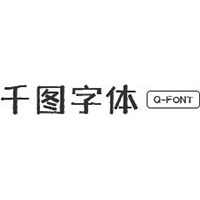Fred Smeijers on Legibility
Fred Smeijers, the award-winning designer of FF Quadraat and fonts for OurType, and author of "Counterpunch," describes the trouble with "legibility" — not just in achieving it as a goal, but describing it as a concept.
It is possible, for anyone and certainly for a typedesigner, to experience aha! moments when it concerns legibility. It has happened to me many times and it still goes on. My legibility instinct became very strong and, I am afraid, it will never go away. This is a real professional deformation which, in real life, means that I can hardly look at any text without first shaping an opinion about the typeface/letters in use, the general layout, quality of print, etc. It usually takes at least a few seconds to scan all these before I can start to read. It is quite a relief to realize this acquired reflex can be suppressed in critical situations, like looking for the right check-in gate in a hurry.
A type designer often has to confront himself with the legibility problem on various levels. Onscreen representation of typefaces, for example, is a field were you will often face it in rather unforgiving circumstances. In the mid-'80s I had to experiment with the then so-called "soft-fonts" — screen fonts with greyscaling. The grayscaling effect, when applied well, delivered such a striking legibility improvement that it simply made me feel very, very happy and content. I was whistling while riding back home from work.
Another example, maybe less obvious than the one just given, but also very important to me, was during the development of the Arnhem typeface. Originally Arnhem was a custom-made type design for Staatscourant — a newspaper of the Dutch Government. During the design process, I was in the lucky circumstance to have the opportunity to test in print as many trial fonts as I thought were necessary. We are talking about real conventional legibility here, meaning newspaper print, economy, small sizes while maintaining character and beauty. During testing, one of the things I discovered was that the simple traditional triangular-shaped top serifs functioned better than all the other subtle variations I could come up with. This is, of course, no golden rule. If it is, it only counts for a certain class of conventional typefaces and even then, only when setting large amounts of text in small point size.
So, there we go, talking about legibility means in the first place that you have to be extremely specific about the circumstances in which the reading takes place. The "triangular-serif story" might contain some truth, but it is not necessarily true when it comes to a billboard or when just two words are set in small type size.
The circumstances in which people can and do read nowadays can be so diverse that I have hardly any hope for the general legibilty tests and their conclusions, as we knew them from a few decades ago. Reading habits do change and they change, I am afraid, faster than someone like Stanley Morison made us once believe. People adapt and accept a lot when it comes down to reading — or better said: scanning — all kinds of messages.
Of course, there are still many of down to earth do's and don't's within typography. These little laws and rules will often hold ground. But that is not legibility, per se — that is general design knowledge which, in principle, has to lead to better and more readable results. So, in the end, what does legibility exactly mean today for general graphic design? I find that very hard to tell.
On the other hand, I am almost sure that certain products which deal with information transfer are being developed in lab-like circumstances. These products are also being tested for legibility. But legibility there means in the first place not just the letters, but ease of use in general. Layout and user interface structure are in such cases often more decisive than a pixel more or less. — Fred Smeijers
Fred Smeijers is a type designer who specializes in typographic research and development for product manufacturers. Among his typeface designs are FF Quadraat and Quadraat Sans, TEFF Renard, and the OurType Arnhem, Fresco and Sansa. Born in the Netherlands, Smeijers studied graphic design at the Academy of Art in Arnhem. His first practice came in the mid-1980s with the firm of Océ, just then entering the field of typography with laser printers. This set the pattern for Smeijers's long engagement with type design in its most functional applications, as part of product design. After five years he left to work in graphic design, helping to establish the group Quadraat (in Arnhem). The name of the design group was also given to his first published typeface: FF Quadraat, launched by FontShop International in 1992. His work of the 1990s included the expansion of the Quadraat family, type and lettering design jobs for Philips, collaboration on Martin Majoor's Telefont type design, typefaces such as TEFF Renard and Romanee, and his first book "Counterpunch." With the award of the Gerrit Noordzij Prize in 2000, Smeijers's achievements in the field of practice, research, and education were formally recognized. This prize included a retrospective exhibition of his work, held in The Hague in 2003. His book "Type now" was also published then, as part of the award. That year also saw the launch of the label he co-runs: OurType. In 2004, Smeijers was appointed Professor of Digital Typography at the Hochschule für Grafik und Buchkunst, Leipzig.
-
 ShanhaiFonts
ShanhaiFonts
Brand:山海字库
Area:China

-
 Cangji Fonts
Cangji Fonts
Brand: 仓迹字库
Area: China

-
 JT Foundry
JT Foundry
Brand: 翰字铸造
Area: Taiwan, China

-
 Handmadefont
Handmadefont
Brand:
Area: Estonia

-
·千图字体
-
 HyFont Studio
HyFont Studio
Brand: 新美字库
Area: China

- ·How to sell your typefaces
- ·Chinese College Student Invents Smog Font
- ·Jim Nutt: Coming Into Character at Museum of Contemporary Art Chicago
- ·Japanese Typography Writing System
- ·Benetton identity redesign
- ·Cocoa Marsh Instant Fudge Candy Mix packaging
- ·Hollywood Star Matt Damon Wrote Better Chinese than Chinese Stars
- ·The Form Book by Borries Schwesinger
- ·Alibaba Supports Font Infringement Complaints
- ·How House Industries Designs Its Retrotastic Logos and Typefaces























